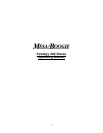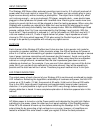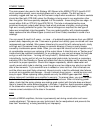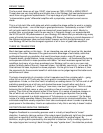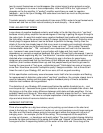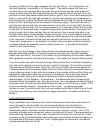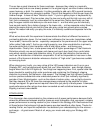
DRIVER TUBES
The four small tubes are all type 12AX7, also known as 7025, ECC83 or MESA SPAX7.
These tubes are very long lasting and trouble free in the Strategy, but best performance will
result from using genuine replacements. The input stage of your 400 uses a special
"instrumentation grade" differential amplifier with a proprietary constant-current-source
diode.
This is a high-tech little solid-state part which enables the phase splitter to work in a simple,
self-balancing mode -- one of the keys to great performance. Occasionally a certain 12AX7
will not quite match this device and one channel will sound weak as a result. Merely try
another tube, or exchange it with the one next to it. Generally though, our experience with
the M-180 and M-190 predecessors of your Strategy 400 means that you should enjoy many
years of trouble-free service from your Strategy 400 Stereo. Following is a brief discussion of
the differences between tubes and solid-state, however we think the performance of your
new Strategy 400 will be the strongest argument of all in favor of great tube amplifiers.
TUBES VS. TRANSISTORS
Much has been written on this topic... It's an interesting one and will never be fully decided
one way of the other. Because of the great economic advantage of solid-state, audio has
proliferated beyond any prediction that could have been made a mere 25 years ago.
Cassette decks, ghetto-blasters, home recording, pocket radios -- all these would be too big
and expensive to build in mass quantities with tubes. Yet most musicians agree that tube
amplifiers (and many of you have purchased your Strategy just for use in your own rack,
where it's totally state-of-the-art). Less well known - but equally convincing - is how well the
Strat delivers for bass, keyboard or stereo playback. You've got to hear it to believe it; then
the arguments for the economic benefit of solid-state can be judged against the better sonic
performance of tubes.
The basic characteristic of a transistor is that it operates much like a simple switch -- going
either full-on or full-off. That's why they're so good in computers and other digital
applications. A tube, on the other hand, is basically an analog device: It's "full-on and full-off"
switching operations are a bit hazy and strained because it would rather work the in-
between area of "partially-on", tracking a "now-more, now-less" type signal. Think of a tube
behaving like its British name: a valve, regulating a flow of current that is dynamic and
pulsing. Then think of the physical action of live music: it's a series of pressure changes in
the air which act on the ear drum in the manner of a pulsing and dynamic flow (analog
behavior) as opposed to a digital sequence of "full-pressure-or-no-pressure". So the basic
nature of a tube's operation makes it the more natural choice for musical amplification. Yet
solid-state amplifiers usually outperform their tube counterparts when it comes to producing
great specs in the laboratory. Here's an explanation of why this is and why it doesn't matter.
DISTORTION AND NEGATIVE FEEDBACK
Negative Feedback is a correcting process used in virtually all amplifiers to "erase"
distortion. It works by taking a portion of the output signal (traditionally right from the speaker
jack) and re-inserting it into the input -- but out-of-phase with the original signal. By
definition, anything extra produced by the amplifier is distortion. So by inverting a portion of
the output signal and running it back through the amp "upside down", the distortion products
5



